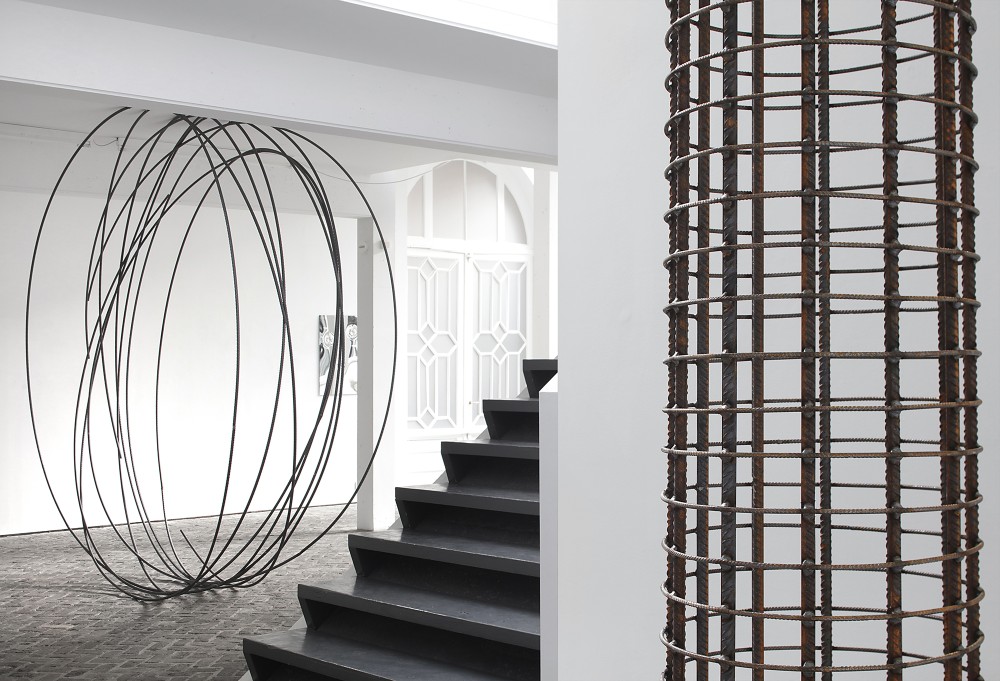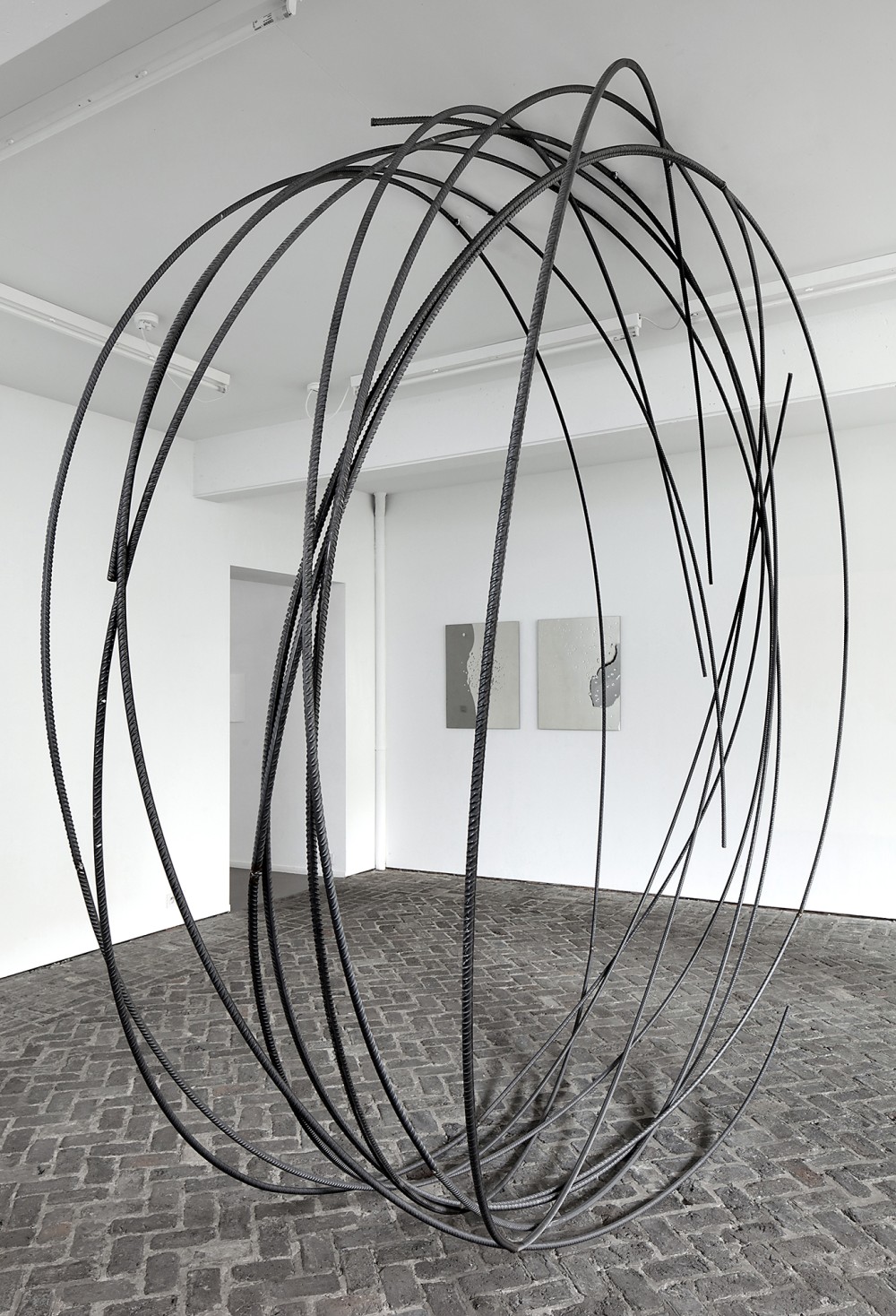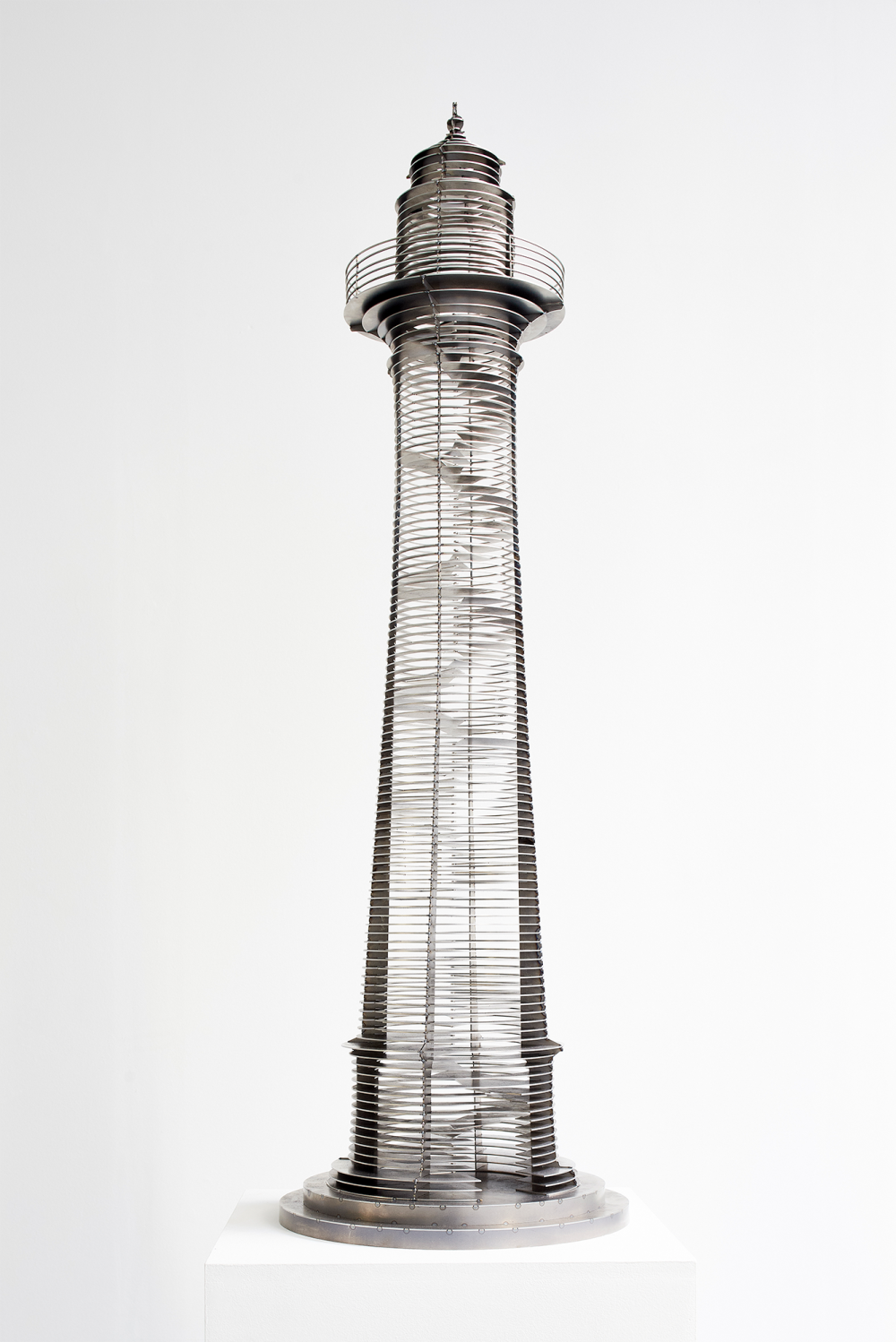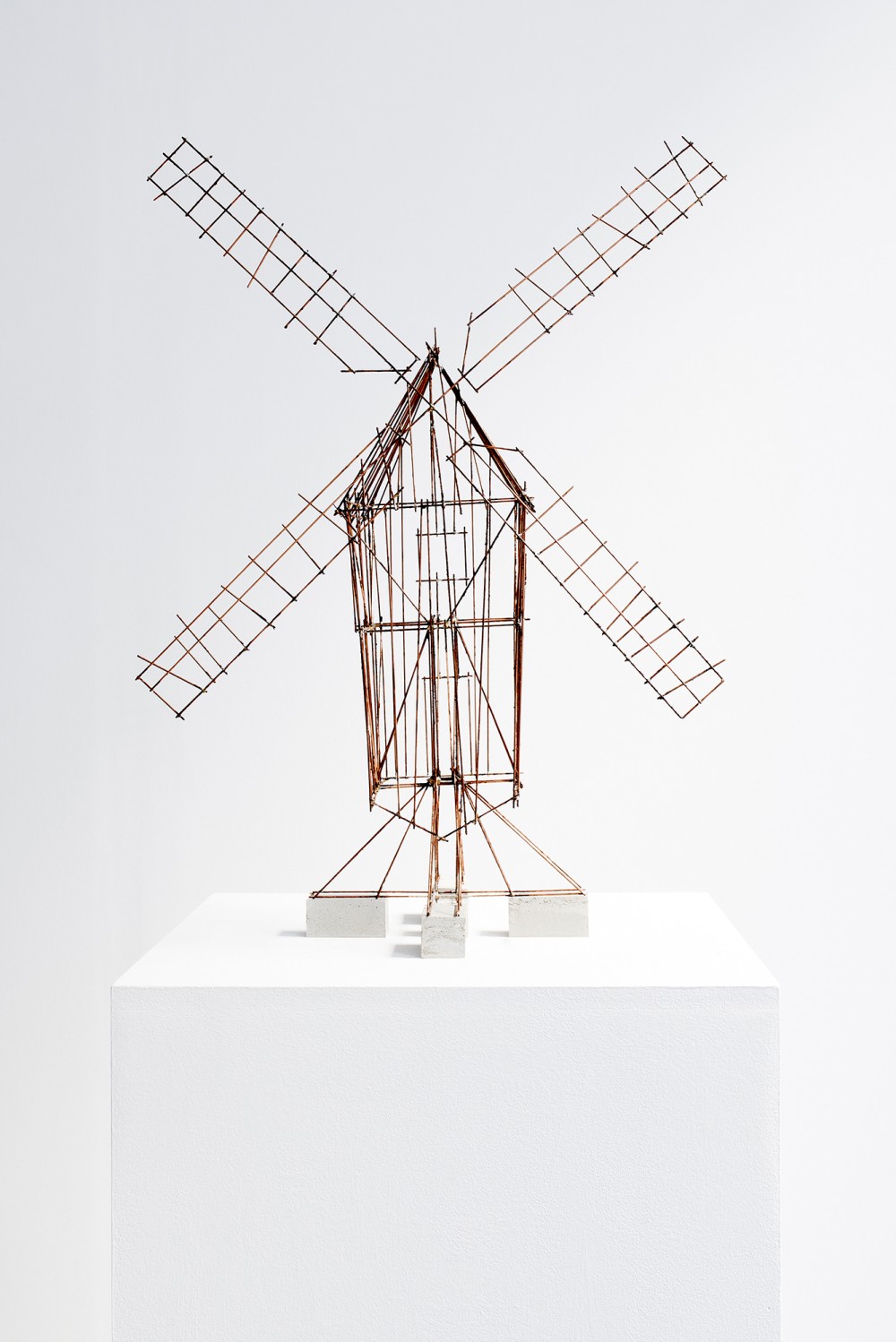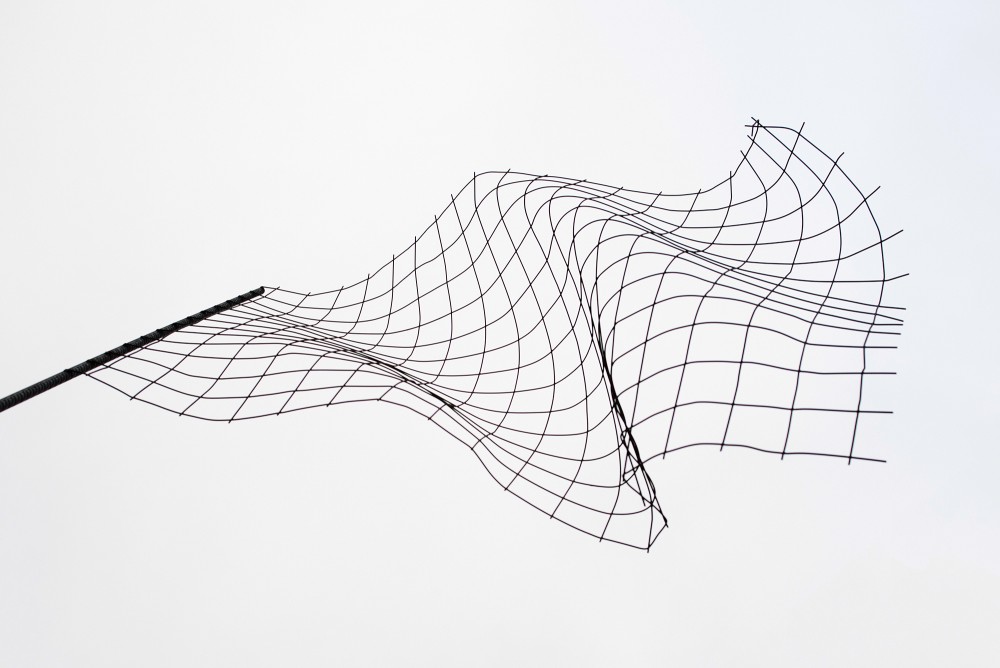Rethink Redraw Rebar
The reconsideration and reimagining of fundamental forms are recurring themes in the work of Gijs Van Vaerenbergh. Time and again, they subject familiar architectural typologies like the church, gate, arch, arcade, pedestal and column to transformative and fresh interpretations. The term 'rebar' in the title pertains to reinforcing steel, often known as 'reinforced steel bars', commonly employed in concrete construction. Several works featured in the exhibition do not incorporate concrete as an artistic element but instead highlight the basic steel structure concealed in the concrete. The use of reinforcement steel alludes to a transient state, as if the works were intentionally left unfinished. Much like a classical reinforcement cage, an articulation is created by combining thicker reinforcement along the length with finer cross reinforcement or braces. Consequently, the arrangement of rebar lines serves as both a spatial line drawing against the backdrop of the gallery space and emphasizes the contrast between a classical architectural element and a contemporary construction method.
The rebar sculptures are combined with other works, revealing the broader interests inherent in the oeuvre of Gijs Van Vaerenbergh. On the one hand, the exhibition features a selection of scale models. For instance, Study for a Windmill presents a scale model of an installation that was constructed in the framework of the Bruegel year in 2019. The installation draws inspiration from Bruegel's studies of windmills and essentially creates a ‘drawing’ in the landscape with reinforcing steel. Similarly, the second model, Lighthouse, is conceived as a spatial line drawing. It is a proposal for a watchtower inspired by the traditional lighthouse design, constructed from approximately a hundred layers of steel, with each layer representing one step. On the other hand, a series of mirrors serves as a kind of counterpoint in the exhibition. The mirrors expand upon two earlier works and demonstrate the impact of a certain action on a reflecting inox sheet. This action distorts the sheet, consequently altering the mirror image of both the space and the artworks within it. As such, the mirrors engage in a dialogue with the other works. The exhibition juxtaposes two extreme forms of steel: the rusty and rough reinforcing steel, typically not meant to be visible, and steel in its most finished and refined state, namely polished as a perfect mirror. The latter becomes a new lens through which to perceive the former.
DATE
2018
LOCATION
Valerie Traan Gallery, Antwerp (BE)

